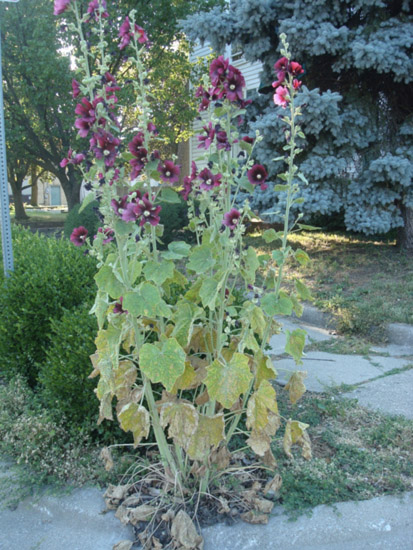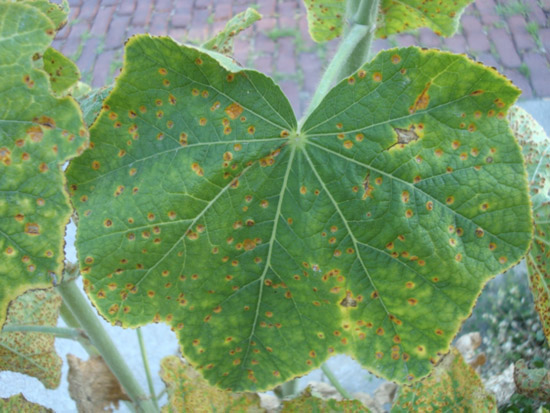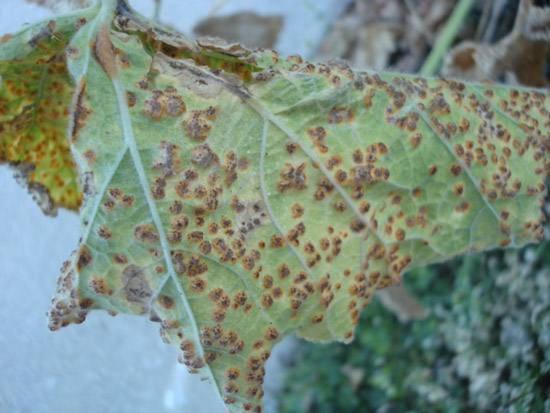Issue 7, June 5, 2012
Hollyhock rust (Puccinia malvacearum)
Various Rust fungi infect a wide range of plant hosts. Hollyhock is commonly a host to the fungal rust Puccinia malvacearum. This rust pathogen is classified as an autoecious fungi, meaning the spore stages require only one host. Puccinia malvacearum is known to also infect several species of the mallow family (Malvaceae), which includes the common or roundleaf mallow (Malva rotundifolia), a common weed. Common mallow can act as a temporary site for the rust spore to reside before it infects hollyhock.

Hollyhocks infected with rust will develop pale yellow spots on the upper surface of the leaves. Brown, rust colored pustules will be present on the lower leaf surface. The pustules house the spores that are responsible for new rounds of infection. Pustules may also appear on the stem of the plant, especially when the infection is severe. Minor rust infections will not harm the plant. However, in the case of severe infection, pustules may prevent the plant from proper photosynthesis and result in wilting and leaf drop. Unfortunately, this disease can be very destructive, and in some cases, limit the use of the hollyhock as an ornamental.


Where there are hollyhocks, there is the possibility of the development of rust disease. There are no specific conditions for rust development; however, windy and wet weather can aid in the spread of this disease. Rust spores are carried by the wind and water, and can infect hollyhocks quite a distance away. As a result, hollyhock rust disease is more prevalent during the spring season after heavy rain.
There are several management strategies in regard to hollyhock rust disease:
- Cut infected plants at the soil line and remove debris as soon as the hollyhocks are done flowering. This prevents the rust disease from overwintering and infecting in the upcoming spring.
- In addition, remove and destroy any mallow weeds growing near hollyhocks.
- Adding a layer of mulch around hollyhocks in the spring will hinder overwintering of spores within in plant debris.
- Scout hollyhocks in early spring. Remove and destroy the first leaves that appear infected.
- Proper location choice can be important to reduce the chance of infection. An ideal site will have adequate sunlight, good soil drainage, and sufficient air circulation.
- It is also recommended to water the plants early in the day, so that they dry relatively quickly.
- Consider purchasing more resistant varieties such as the Alcea rugosa and Alcea ficifolia.
- A preventative fungicide can be applied to plants BEFORE infection or as soon as infection is detected. Frequent treatments will need to be applied as new growth emerges.
(Stephanie Porter and Zu Dienle Tan)
Authors:
Stephanie Porter
Zu Dienle Tan